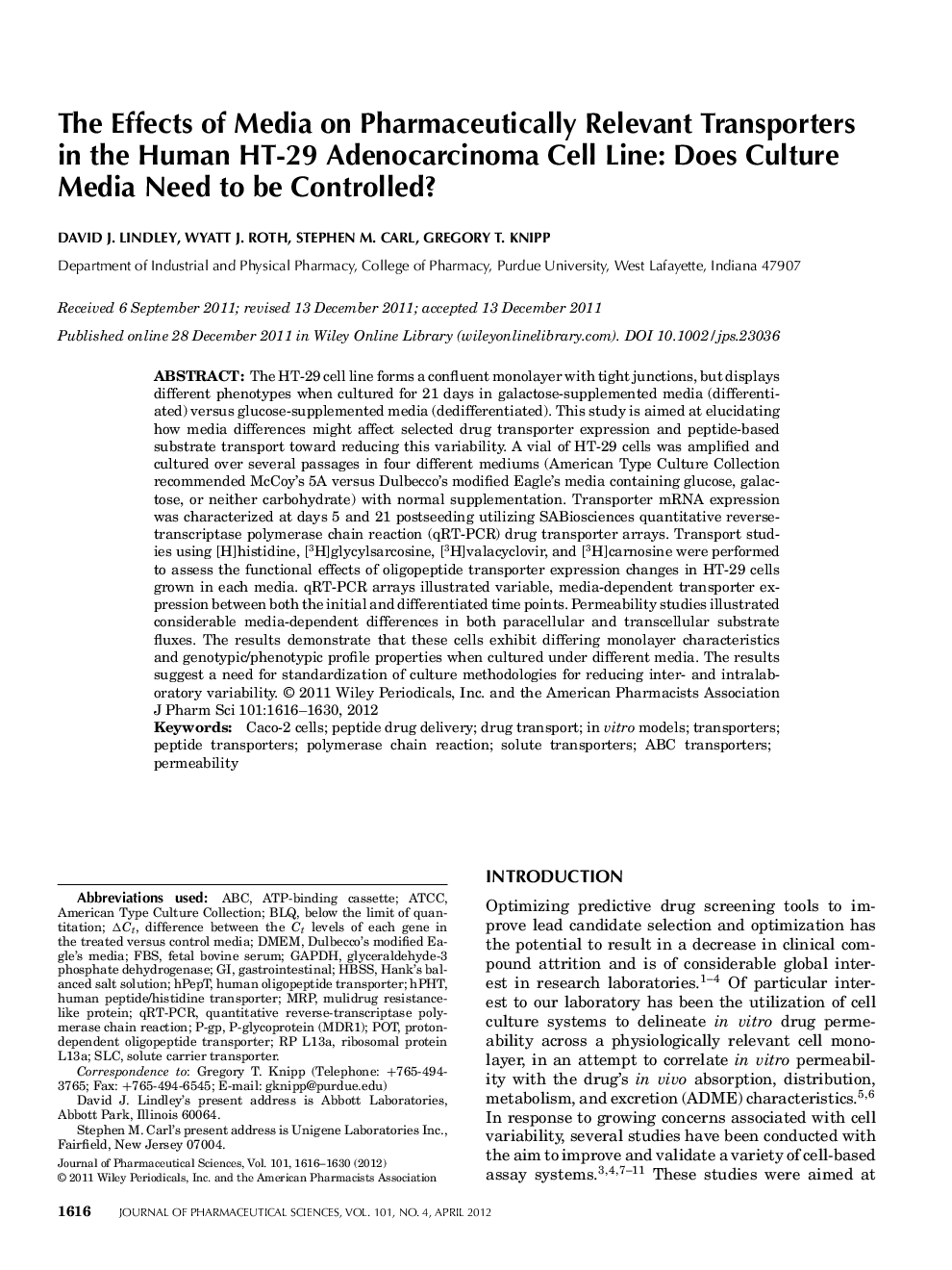| Article ID | Journal | Published Year | Pages | File Type |
|---|---|---|---|---|
| 2485862 | Journal of Pharmaceutical Sciences | 2012 | 15 Pages |
Abstract
The HT-29 cell line forms a confluent monolayer with tight junctions, but displays different phenotypes when cultured for 21Â days in galactose-supplemented media (differentiated) versus glucose-supplemented media (dedifferentiated). This study is aimed at elucidating how media differences might affect selected drug transporter expression and peptide-based substrate transport toward reducing this variability. A vial of HT-29 cells was amplified and cultured over several passages in four different mediums (American Type Culture Collection recommended McCoy's 5A versus Dulbecco's modified Eagle's media containing glucose, galactose, or neither carbohydrate) with normal supplementation. Transporter mRNA expression was characterized at days 5 and 21 postseeding utilizing SABiosciences quantitative reverse-transcriptase polymerase chain reaction (qRT-PCR) drug transporter arrays. Transport studies using [H]histidine, [3H]glycylsarcosine, [3H]valacyclovir, and [3H]carnosine were performed to assess the functional effects of oligopeptide transporter expression changes in HT-29 cells grown in each media. qRT-PCR arrays illustrated variable, media-dependent transporter expression between both the initial and differentiated time points. Permeability studies illustrated considerable media-dependent differences in both paracellular and transcellular substrate fluxes. The results demonstrate that these cells exhibit differing monolayer characteristics and genotypic/phenotypic profile properties when cultured under different media. The results suggest a need for standardization of culture methodologies for reducing inter- and intralaboratory variability.
Keywords
Related Topics
Health Sciences
Pharmacology, Toxicology and Pharmaceutical Science
Drug Discovery
Authors
David J. Lindley, Wyatt J. Roth, Gregory T. Knipp, Stephen M. Carl,
